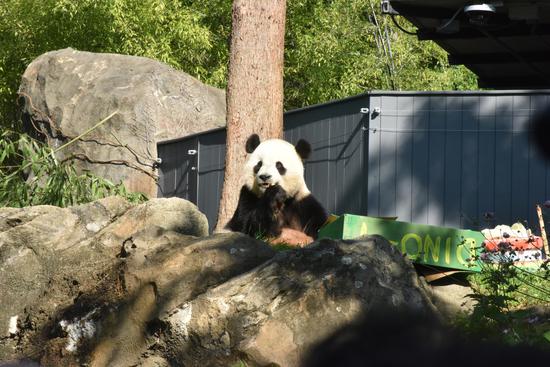(ECNS) — A lifelike robotic Tibetan antelope has successfully integrated into a herd in Hoh Xil National Nature Reserve, grazing and moving alongside wild animals to monitor them without interference.
The mission, led by the Northwest Institute of Plateau Biology under the Chinese Academy of Sciences, aims to break traditional limits on observation distance and collect close-range, zero-disturbance footage and behavioral data of this endangered species.

Located in the northwestern Qinghai-Tibet Plateau at an average altitude exceeding 4,600 meters, Hoh Xil is known as the "life-forbidden zone" due to its extreme cold and thin air. It is also one of the world's most important habitats for Tibetan antelope. Every summer, tens of thousands of pregnant females migrate to areas such as Zhuonai Lake to give birth, earning it the nickname "maternity ward".
During the mission, the robot antelope was remotely operated over open terrain at distances of up to two kilometers, traversing slopes, wetlands, and uneven ground before joining the herd. Unlike vehicles or human approaches, this method avoids triggering panic responses in the animals.
Researcher Lian Xinming noted that the robotic antelope closely matches real animals in color and body shape, with only slightly stiffer movement. Its deployment enables unprecedented close-range observation, providing precise data to better understand the antelope's behavior and ecological needs, ultimately supporting targeted conservation efforts.
In recent years, conservation in Hoh Xil has increasingly adopted advanced technologies. In addition to the robot antelope, mobile sentry systems and other smart monitoring devices have been deployed to safeguard migration routes and combat poaching.
Qiu Peizhaxi, head of law enforcement at the Hoh Xil management office under the Sanjiangyuan National Park Administration, said that robotics and artificial intelligence are making ecological protection in the region more efficient, environmentally friendly, and sustainable.
(By Evelyn)


















































 京公网安备 11010202009201号
京公网安备 11010202009201号